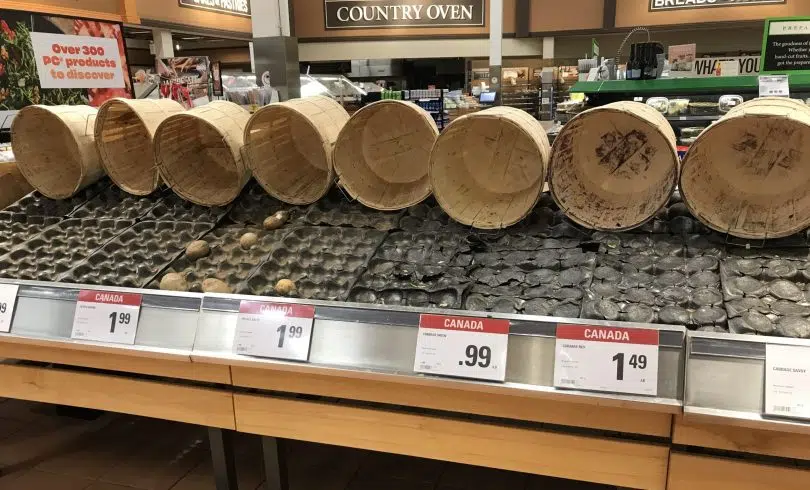The toilet paper and cleaning supply aisles at your local store are likely nearly empty. The shelves may give the impression that the region is running out of certain foods.
But major retailers in the Maritimes and the industry’s largest association say the supply chain is strong and working to meet unprecedented stockpiling and panic buying during the coronavirus pandemic.
Jim Cormier, the Atlantic Director for the Retail Council of Canada, said his organization is trying to get the message out that there are no major supply chain issues.
“It’s not like you can simply flick a switch and have more product appear instantaneously,” he said.
Many shoppers across the Maritimes are finding low amounts of toilet paper, soap, over-the-counter medications and dry foods as people stock up in response to fears of being quarantined due to COVID-19. Public health advises having essentials on hand but is telling people to resist “panic buying.”
Cormier said retailers are trying to discourage hoarding and buying more than people need, especially when it comes to products in high demand.
“You have to also look out for your neighbors and the folks that live in your broader community to ensure that there’s enough product to go around for everybody,” he said.
Premier Blaine Higgs held a press conference with a heightened sense of urgency on Wednesday afternoon, calling on New Brunswickers to stay at home as much as possible.
“This is not an exercise, this is not a hypothetical drill,” he said. “This is reality like we have never seen before and we must react.”
Higgs said people should stay six feet away from others if they need to go out to a grocery store or pharmacy, which have remained open despite other business closures.
“Our supply chain remains strong. That will not change,” he said.
Retailers place limits, change hours
Stores across the Maritimes are rolling out different strategies to reduce panic buying, such as placing purchase limits on toilet paper and other products.
Some grocery stores and pharmacies are also taking steps to help serve vulnerable customers, such as the elderly and those who are immunocompromised, by creating special shopping hours.
Major grocers and retailers are increasing sanitation practices, including wiping down shopping carts, ending sampling and limiting opening hours to have extra cleaning time.
“That’s been very helpful, especially if it’s the elderly, not only from a public health perspective but also to provide an opportunity for those folks to get in and shop,” Cormier said.
Shoppers Drug Mart is dedicated the first opening hour at their stores to seniors and people with disabilities. Sobeys will start a national senior shopping hour on Friday.
In addition to improving store environments, retailers are focusing on improving online shopping services. Some grocery stores are dropping or lowering fees for delivery or advance pick-up orders.
“You can still be confident to go to retail stores and confident to go and pick up the items that you want and need,” Cormier said. “But if you still aren’t comfortable doing that there are some retailers that have taken additional steps to try and make the online shopping and delivery processes as seamless as possible.”
Less panic buying would help supplies
Cormier said retailers are doing their best to source more products and meet customer needs. But it would get easier to have goods back on shelves if consumers stopped “hoarding” and in some cases buying up to a year’s supply of certain items.
The premier also warned against panic buying in a press conference on Sunday.
“People should follow their normal practices of buying what they need, with the confidence that the necessities will continue to be available on an ongoing basis,” Higgs said.
Certain products, such as hand sanitizer and cleaning supplies, are expected to remain in high demand through the COVID-19 outbreak, but many products should start coming back into stock over the coming days – and stay on shelves – if panic buying declines.
For consumers wondering if toilet paper will return to Maritime grocery stores – it will. It’s just a matter of time.
The supply chain for a product involves asking for more, sourcing it from locations around the world, then shipping it to distribution centres to send to stores.
“It’s not something that happens overnight at all,” Cormier said.
A version of this story was published in Huddle, an Acadia Broadcasting content partner.




